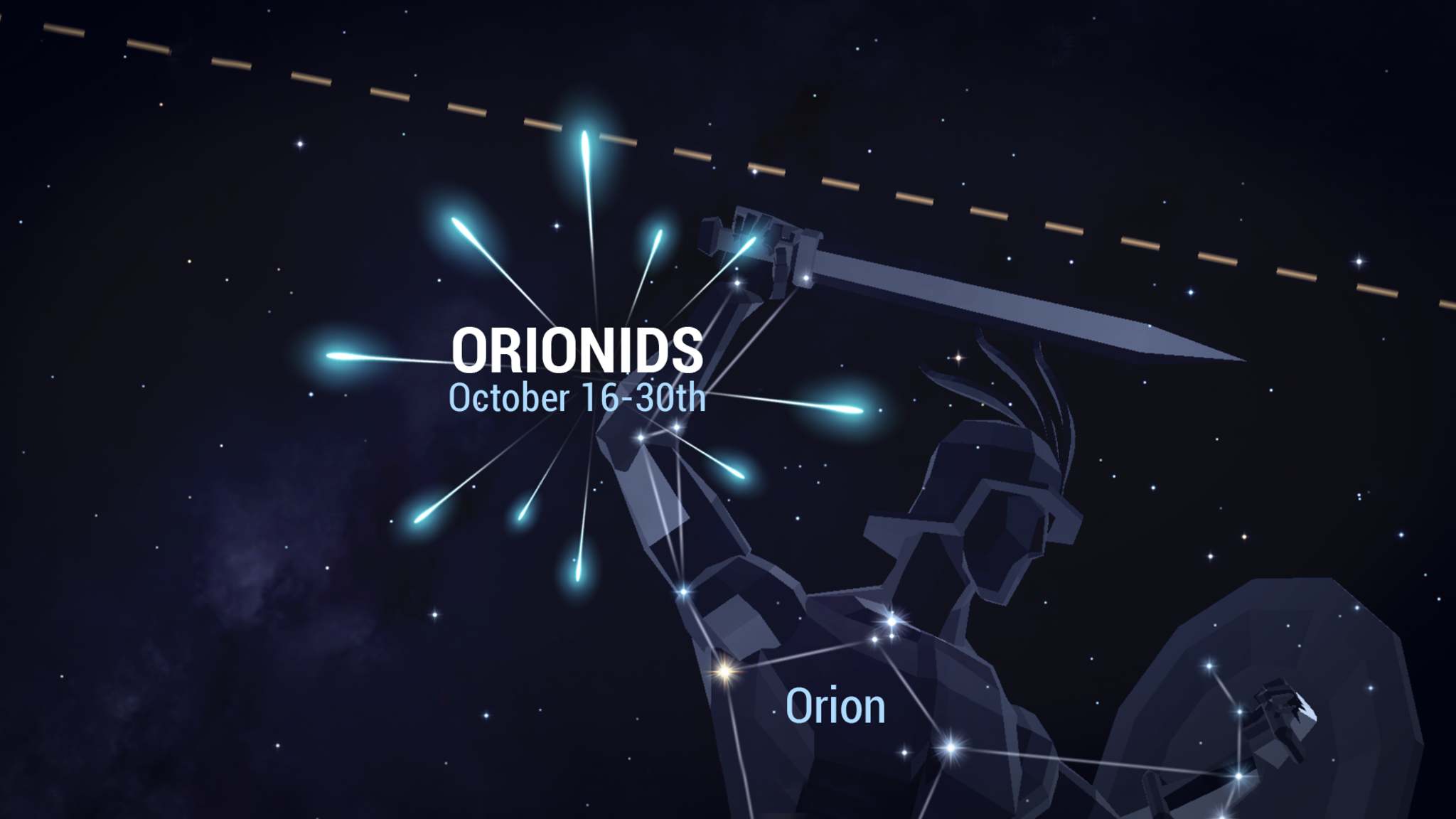Orionid Meteor Shower
On Sunday, October 21, the excellent Orionid meteor shower, which is derived from material dropped by repeated past passages of Comet Halley, is underway and observable world-wide.
It will peak in the hours after midnight (in your local time zone). At that time, the sky overhead will be ploughing through the densest region of the particle field, generating up to 25 meteors per hour.
The meteors can appear anywhere in the sky, but true Orionids will be travelling in a direction away from a location (the radiant) a fist’s diameter to the upper left of the bright red star Betelgeuse in the constellation of Orion. Although not too numerous, the Orionids are known for being bright and fast-moving. You can watch for meteors in the evening, too — but many of them will be hidden behind the Earth’s horizon.
This shower has a broad period of activity because the debris field is very spread out and the comet’s orbit does not cross Earth’s at a sharp angle. So, technically, the Orionids will linger until late November — weakening as time passes. Unfortunately, the moon will be close to full around the peak evenings this year, somewhat spoiling the shower.
To see the most meteors, find a wide-open dark location, preferably away from light polluted skies, and just look up with your unaided eyes. Binoculars and telescopes are not useful for meteors — their field of view is too narrow. If the peak night is cloudy, several nights on either side will be almost as good. Happy hunting!




